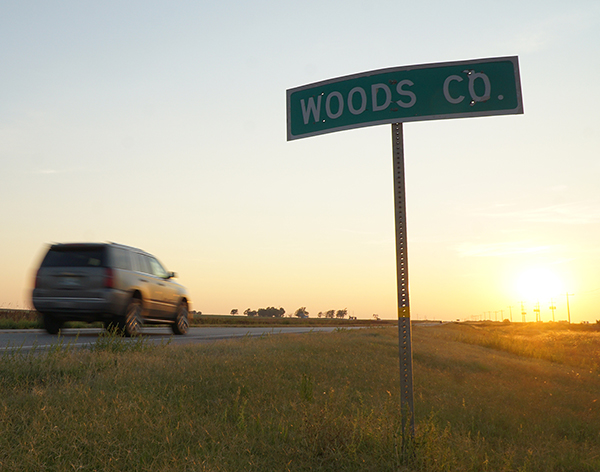By JORDAN GREEN, Editor-in-Chief
Alva has gained 83 residents since 2010, unlike other rural areas

Woods County’s population dropped by about 2.9% throughout the last decade, but Alva’s population grew slightly, according to data from the 2020 Census.
The county’s population declined from 8,878 in 2010 to 8,624 in 2020, a loss of 254 residents.
Alva, however, gained 83 residents. The city’s population grew from 4,945 in 2010 to 5,028 in 2020.
Woods County’s population drop is part of a nationwide trend among counties, many of which are losing residents as an increasing number of Americans move away from rural areas and toward metropolitan areas, Census officials said.
About 52% of the nation’s counties experienced population declines in the last decade, said Marc Perry, a senior demographer at the U.S. Census Bureau. However, Woods County’s population dropped at a lower rate compared to other rural counties in Oklahoma.
Woods County’s western neighbor, Harper County, had the largest population decline in the area with a drop of more than 11%. Further west in the Panhandle, Beaver County’s population dropped by roughly 10.4%.
Nearby, Grant County’s population went from 4,527 in 2010 to 4,169 in 2020, a drop of about 7.9%.
However, some surrounding counties had small population increases:
• To the east, Alfalfa County’s population increased from 5,642 residents in 2010 to 5,699 residents in 2020, a 1% increase.
• To the south, Major County gained 255 residents from 2010 to 2020, bringing its current population to 7,782, an increase of about 3.3%.
• To the southwest, Woodward County’s population grew from 20,081 residents in 2010 to 20,470 in 2020, an increase of about 1.9%.
METROPOLITAN AREAS GROW ACROSS THE NATION
Oklahoma gained about 208,000 new residents in the last 10 years, a roughly 5.5% increase. That growth primarily occurred in metropolitan areas such as Tulsa and Oklahoma City.
About 86% of the nation’s population lived in metropolitan areas during 2020, a 1% increase from 2010. About 8% lived in micropolitan areas, which are regions that have between 10,000 and 50,000 residents.
“Many counties within metro areas saw growth, especially those in the south and west,” Perry said. “However, as we’ve been seeing in our annual population estimates, our nation is growing slower than it used to.”
With more than 3.9 million residents, Oklahoma has the 28th largest population of all U.S states and the District of Columbia.
California has the largest population of all U.S. states and the District of Columbia, with more than 39.5 million residents. Texas has the second largest population, with more than 29 million residents, and Florida has the third largest, with roughly 21.5 million.
The United States has a population of more than 331 million, Census data shows. That’s an increase of more than 22 million people, or 7.4%, since 2010.
IMPACT OF CENSUS
Census data is used in redistricting processes for legislative seats across the nation, both at the state and federal level.
But because of the coronavirus pandemic, the Census didn’t release detailed data to lawmakers on time.
In Oklahoma, state lawmakers used Census population estimates to redraw districts during their regular legislative session this spring. However, those boundaries will have to be redrawn using the new Census data during a special legislative session this November.
The new districts will be used during elections starting in 2022.

